Welcome to the latest edition of our bikepacking packing list for the Andes, South America, updated 2023/2024.
We spent just over four years between 2016 and 2023 (we took a break due to the pandemic) bikepacking from Deadhorse, Alaska to Ushuaia, Argentina. We incorporated as many bikepacking routes on the way as we could, as well as establishing a few of our own, such as the Trans-Mexico and Camino del Puma. During that time we made numerous changes to our equipment, for various reasons.
This post discusses some of the revisions we made to gear along the way and lists exactly what we were carrying for our final 2022-2023 leg ( ~5000km from Mendoza to Ushuaia), but it is an equipment set that is suitable along the length of the Andes and many other parts of the world too.
Someone asked me recently what gear we’d changed or replaced during our 51,500km ride south from Alaska to Patagonia. Quite often people ask how many chains or tyres we wore out, or how many punctures we had to fix (very few, with tubeless), but once I thought a bit harder about everything else; such as clothing, sleeping gear and other accoutrements I realised that the only items that I arrived in Ushuaia with that I had carried from Alaska were my spork, pocket knife and camera body.
This is not to say that we wore out or broke every other bit of gear, but it came about from a variety of factors: typical wear and tear (as you’d expect of clothing, tents and tyres for example), adapting our loads and carrying methods to suit our ambitions, and influences such as sponsorship and upgrades, either to improve our technology or keep apace with useful innovations.
We were on the road long enough, spending over two years in the Andes alone, that we developed a clear idea of exactly what we did and didn’t need to be comfortable, and which types of clothing and equipment suited the climate and varying conditions of the Andes. Weight savings were important for us because we wanted to enjoy challenging routes such as Tres Cordilleras, Mama Coca, Camino del Puma and Ruta de los Seis Miles, as well as compensate for carrying my photography kit (camera + three lenses and tripod), laptop and hard drives.
To learn more about long distance bikepacking, bikes and equipment, check out our Bikepacking & Off-road Cycle Touring Guide.
→ Hana on the incredible singletrack crossing of Volcan Quetrupillan, Chile. This involved a 1000m climb of mostly hike-a-bike, with the reward being spectacular high elevation singletrack with views of Volcan Lanquin.
Our overall ethos as far as equipment is concerned is to carry as little as we think we can get away with to meet basic comforts. Neither of us like being cold – especially while waiting to photograph sunrise – so we don’t skimp on warm jackets, but we do eschew apres-riding wear, bike parts for ‘what if’ situations and excess tools.
Our ‘kitchen’ is very basic, because what’s more important to us is being light and agile enough to have broad choices about where we ride, and not to just do remote hike-a-bikes and steep mountain roads, but to be able to enjoy them too.
After so much time on the road, we’ve been able to fine tune our clothing layering system so that it is as versatile as possible, while as light as possible for the expected conditions.
The list that follows is what we find to be comfortable for riding in alpine and high altitude desert conditions (down to -15°C) typical of the Andes. That includes conditions ranging from cold and wet (Ecuador and Chile for example) and very cold and relatively dry (Peru and Bolivia during dry season, as well as the Puna regions). Note that in both these regions highs in the low 20s (celcius) are common during the day, even at 4000m, and the canyons can reach into the 30s.
→ Camped in strong winds with the Big Agnes Copper Spur HvUL2 Bikepack on Volcan Lonquimay, Monkey Puzzle Trail, Chile.
Clothing & Equipment Notes
• We rode the mountains in Colombia, Ecuador and northern Peru (to Huaraz) with +5°C Kathmandu Pathfinder sleeping bags, as we’d sent our winter bags down to Huaraz from Mexico, way back. Sometimes sleeping at elevations above 4000m we thought we’d freeze, but these bags were actually quite manageable as long as we slept in all our clothes (including down jackets at times), so if you want to save weight and bulk, consider this strategy through the ‘warmer’ countries. Only beyond Huaraz was it consistently colder, so we were happy to have warmer bags.
• In June 2019 we then changed our winter bags (rated -10°C) to a more broadly versatile Big Agnes Hitchens UL 20 (-7°C) which were perfect for Peru/Bolivia altiplano conditions and the puna, as long as you are prepared to wear socks, leggings and merinos in the bag during the coldest nights and sometimes even a down jacket if you are a cold sleeper. Doing this enabled us to get our pack weight even lower and save more space.
• When we returned in 2022 we tried a different strategy with sleeping bags and used some Big Agnes Lost Ranger sleep system bags that comprise of dual (inner and outer) sleeping bags. We carried one inner bag (rated to -7°C) from a Lost Ranger 0°F system and both bags from a Lost Ranger 15°F system (together rated to -9°C). Hana used the latter, as she is a colder sleeper than me. When it was hot (it was regularly beyond 30C for the first few weeks) we split the 15°F system between us which provided two warm weather bags of 2 & 10°C which meant we could sleep more comfortably during hot nights. This method is recommendable for tours in vastly changing climates. The Lost Ranger inner bags are very simple, with short, light zips and no hood adjustment, which means you get max insulation for your money and no weight wasted on other features.
• Our switch from the MSR Hubba Hubba to the Big Agnes Copper Spur HV UL2 (bikepacking model) was well worthwhile. Things we prefer about the Copper Spur are:
• ShortStik tent poles which fold extra short
• Rooftop clip points for drying clothing
• Helmet holders
• Greater stability in wind (and capacity for additional guy lines)
• Better internal storage (large and accessible pockets)
• Weight & space savings
If you use lightweight, partially mesh tents in dusty & windy conditions (such as the Chilean/Argentine Puna) you can expect lots of dust inside, and the zippers to have a shorter life (carrying spare sliders is essential). The latest model with double vestibule zips allows you to rig an awning for cooking in the rain, which was a feature we used.
However, we wore out the inner tent zip sliders (which we carried replacements for) in just 4 months due to the dusty conditions in Argentina, and had the same issue with our earlier MSR Hubba Hubba.
• We strategically lighten up at times for extra difficult sections of riding (Baja Divide, parts of TEMBR/Tres Volcanes, Cordillera Huayhuash, Mama Coca) by sending stuff ahead with couriers. This is usually to a reliable location such as a pre-booked hostel or Warm Showers host.
• Some of the equipment featured on this list is from sponsors. But in every case, the items we use are specifically what we wanted, not what the sponsor wanted us to be carrying.
• In Peru, Bolivia and the dry puna we found it quite useful to have Andes-style leg warmers (widely available in Peru & Bolivia) for extra leg warmth in camp and during cold sleeps; occasionally on-bike too, but we didn’t carry these in warmer, wetter climates further south.
• For southern Patagonia in autumn we found it useful to have lightweight softshell pants for the frequent cold/windy days and also because we we did a lot of hiking over this period (El Chalten & Torres del Paine areas). These are not something we typically carry.
Baja Divide Packing List & Gear Tips
Andes Packing List (2020 edition)
To see how and where we pack everything, scroll to the end.
→ Hana’s Otso Voytek in Chile.
Changes to Bikes
I thought I’d just briefly mention a couple of notable changes to we made to our bike set ups for our 2022-2023 return to the road:
Flat Pedals
We’ve both been ardent fans of SPD style pedals for well over 20 years, using them exclusively for all our biking, but in recent years Hana developed a neuroma (a benign growth of nerve tissue, causing irritation) in her foot, while I have had some issues with my Achilles tendons (brought about by long distance hiking and cycling ultras). Consequently, in the last couple years we both made the shift to flat pedals. We’ve noticed no change in our power output on the bikes, like that our feet can be more relaxed on long descents (by placing them mid-foot on the pedal) and find flats (and thus more flexible shoes) to be a better match for out style of adventure bikepacking, where hike-a-bike is sometimes necessary.
With the right shoes, they’re also better for off bike hiking. Hana opted for Shimano GR7 while I have been using Adidas 5.10 Trail Cross XT. We like them so much we’re both on our second pairs. We used them for overnight hikes in the El Chalten region as well as numerous day walks.
Passchier Bamboo Handlebars
While we were back in NZ during the pandemic Christchurch, NZ company Passchier asked us if we’d be interested in trying their unique laminated bamboo handlebars. The 760mm wide/22 degree sweep Gump bars (the painted version is called Jenny) suited our bikepacking style perfectly and we’ve been converts since, taking a pair each back to South America. The wrist angle is comfortable, while the noticeable bar flex, as well as vibration damping qualities of the bamboo itself are a perfect match for rigid forks and plus tyres.
Hydraulic Disc Brakes
Traditional long distance touring/bikepacking wisdom suggests that mechanical disc brakes are the lowest risk and most maintainable option for long trips. If you snap a lever (as I once did in the Andes), it’s just a matter of swapping cables over and you are good to go. Mechanicals are simple and require no bleeding, but their disadvantages include more regular adjustment being required, and they’re simply not as powerful as hydraulics. We use hydraulics for all of our bikepacking in New Zealand (short duration trips), but used mechanicals for the vast majority of our Americas tour.
For the 2022/2023 leg we decided to give hydraulics a try (Shimano Deore 2 & 4 piston) and can report no problems during the five months we used them, in fact they did not need bleeding once, despite some very intensive use. Aside from much greater braking power, another advantage is that the greater stopping power, combined with long lasting metallic pads, meant we changed rear pads only once in that time and the front pads last for the whole trip.
→ Camped on the Patagonian Beer Trail, Argentina.
Body
• Singlet/tank top: Alpine Fit polyester blend (no longer made)
• 2 x Short sleeve merino: Mons Royale & Macpac
• 2 x Long sleeve merino: Mons Royale AirCon Wind Jersey (windproof front) & 200 GSM Merino Flex (thin stretchy baselayer)
• Lightweight windproof jacket: Montane Featherlite Trail Jacket
• Waterproof breathable shell jacket: Rab Spark, 40D Pertex Shield 2.5. (Nice and light with a large hood that fits over a helmet)
• Synthetic insulated jacket: Patagonia Nano Air Hoody (Light & versatile, worn cycling on extra cold days and paired with down jacket in camp)
• Down jacket: Big Agnes Zetto UL (Has a hood – makes a big difference in cold wind etc)
Legs
• Underwear (1 pair)
• 2 x shorts: Kuhl Silencr Kargo Shorts, 8″ & 12″ (worn as over-shorts over regular cycling shorts. I generally do not carry long pants, and instead wear shorts with warm leggings)
• Padded cycling shorts (1 pair)
• Fleecy knee warmers (Pearl Izumi)
• Long johns: Macpac powerstretch or Kathmandu merino blend (depending on season, powerstretch are warmest)
• Rain pants: Kathmandu Trailhead (modified to ¾ length)
Head/Hands/Feet
• Long finger Wolftooth Flexor cycling gloves (with thumb and index finger cut off)
• Specialized Trail-Series Thermal Glove (windproof – for cold/dry or damp weather)
• Showa TEMRES 282-02 cold weather glove (relatively cheap, waterproof/breathable gloves used by fishermen – brilliant for wet/cold weather)
• Fingerless light wool gloves from Peru (great for photography)
• Handknitted alpaca fleece hat, from Peru
• 2 pairs merino blend socks (1 medium for riding, 1 thick for riding/sleeping)
• 1 pair knee high compression sock (work well paired with long shorts, or for an extra layer under leggings)
• 1 pair ankle sock for hot weather, polyester blend (substituted with a merino sock after hottest season)
• Alpine Fit Geo Merino wool neck gaiter (good for cold descents & instant end of day insulation)
• Polyester buff (for sun protection)
• Baseball cap (for apres-bike wear and sun protection on climbs/hiking)
• Cycling cap (keeps the wind off the head on cold descents)
• Bike shoes, Adidas 5.10 Trail Cross XT
• Gore-tex over socks (plain 3-layer Gore-Tex stretch)
• Flipflops/jandals
Tech
• Macbook Air M1 13” + UAG Sleeve + drybag
• 2 x Samsung Portable SSD T7 (2TB) + 2 x USB-C cables
• Power bank: Xiaomi 20,000 mAh + cable (for Seis Miles we also had a 10,000 each)
• Samsung In-ear headphones
• Phone: Samsung S21+ (used for map reading/planning with OsmAnd+ app)
• Triple port wall charger, USB-C and 2 x USB-A. Adaptable for Chile, Argentina & NZ and other countries.
Accessories/Misc
• Helmet: Scott Vivo Plus
• Sunglasses, Sungod Velans with dark lens & photochromic yellow tint lens
• Backpack: ultralight 15l silnylon
• Homemade Gore-Tex saddle cover (for leather Selle Anatomica X2 saddle)
• Lightweight travel wallet
• Passport & vaccination record
• Headlamp: Black Diamond Revolt 350 lumen (rechargeable or AAA)
• Biomaxa Pro-ride Chamois Cream
• Various drybags
• Water bottles: 700ml x 3, 1.2l Kleen Kanteen stainless bottle
• Water bladder: 2.0 litre Platypus x 1
• Homemade light nylon food bag
• Small rear light (USB rechargeable)
Sleeping/Camping
• Sleeping bag: Big Agnes Lost Ranger UL 3N1 0°F (Inner bag only, 794gm total weight, 454gm of 850 fillpower DownTek)
• Kathmandu Polygiene/silk blend sleeping bag liner
• Sleeping pad: Big Agnes Rapide SL Insulated 20 x 72″ (R-Value 4.8. Not the lightest mat available, but sturdier and warmer than the lightest mats)
• Silver coated bubble foam, 1m x 40cm (protecting tent floor/comfort sitting outside)
• 500ml plastic bowl (all eating/drinking duties)
• Titanium spork
• Toiletries: cut down toothbrush, 25ml toothpaste, razor, soap scrap, sunscreen, lipbalm, medications
• Microfibre pack towel, small
Bikepacking Bags/Luggage
• Revelate Designs Harness
• Revelate Designs Salty Roll
• Revelate Designs Egress Pocket front bag
• Revelate Designs Mountain Feedbag
• Revelate Designs bolt-on frame bag for Voytek
• Revelate Designs Mag-Tank 2000
• Revelate Designs Jerry Can
• Revelate Designs prototype waterproof holster rear pannier
• Revelate Designs Polecat cargo bags x2 for fork
• Revelate Designs Joey downtube bag
• Plasmo Bikepacking Custom Lens Bag (Handlebar)
Find everything you need to know about long distance bikepacking in the Bikepacking & Off-road Cycle Touring Guide.
Body
• Sports bra & regular bra
• Singlet/vest: Alpine Fit Ridgeline Racerback
• Cycling top: Mons Royale short sleeve merino tee
• Long sleeve cycling top: Mons Royale Air-con Wind Jersey
• Long sleeve thermal top: Alpine Fit Rendezvous Ridge
• Midlayer: North Face Summit Futurefleece
• Windproof jacket: Macpac Whitcombe Pertex Windbreaker
• Down jacket: Big Agnes Bearsley UL (super light & compressible)
• Gore-Tex shell jacket: Rab Meridian (large hood fits helmet well)
Legs
• 2 x underwear
• 2 x padded bike shorts
• Shorts: Terry Vista bike shorts
• Leggings: 3/4 polyester blend (used in combo with knee socks for ‘full leggings’). Once further south, Alpine Fit Katabatic Merino leggings & Bushwhacking Leggings
• Rain pants: Kathmandu (full length, ankle zip)
Head/Hands/Feet
• Giro bike gloves short finger
• Wolftooth Flexor bike gloves long finger
• Showa TEMRES 282-02 cold weather glove (relatively cheap, waterproof/breathable gloves used by fishermen – brilliant for wet cold weather)
• Neck gaiter: Alpine Fit Geo Merino
• Beanie: Alpine Fit Nordic Anywhere merino
• Woollen gloves: Merino
• Cycling cap
• Sun visor
• Headband: Alpine Fit Traverse
• Socks x3 (2 thin, 1 thick)
• Gore-tex socks
• Knee high socks (paired with 3/4 leggings when cold)
• Helmet: Giro Verce MIPS (light)
• Sunglasses: SunGod Ultras with photochromic lenses
• Shoes: Shimano GR7 flats
• Sandals: Chaco Lowdown (light)
Tech
• Phone: Samsung S20+
• Camera: Sony A6400 with 16-70 lens
• Spare batteries for camera
• Spare SD cards for camera
• USB wall plug, double
• USB C phone cable
• USB mini cable x2
• Power socket adaptor for Chile
• Power bank: Xiaomi 20,000 mAh + cable
• Head lamp: Black Diamond Revolt 350
• Rechargeable rear light
• In-ear headphones
• Hard drive 2TB
Accessories/Misc
• Passport & vaccination record
• Wallet
• Reading glasses
• Homemade light nylon food bag
• Drybags – assorted
• 2 x spare Revelate Designs Washboard Strap
• Bottles: 700ml Otso x2
• Water bladder: 2.0 litre Platypus
• Homemade Gore-Tex saddle cover
• Hip Pack: Evoc Pro 3L
• Back pack: Sea to Summit Ultra-sil
Sleeping/Camping
• Sleeping Bag: Big Agnes Lost Ranger UL 3N1 15°F/-9°C (992gm total weight, 425g fill weight) 850 fillpower DownTek.
• Kathmandu Polygiene/Silk sleeping bag liner
• Sleeping mat: Big Agnes Rapide SL Insulated 20 x 72″ (R-Value 4.8. Not the lightest mat available, but sturdier and warmer than the lightest mats)
• Silver coated bubble wrap, 1m x 40cm (for protecting sleeping mat, sitting outside)
• Spoon, plastic Sea to Summit
• 500ml plastic bowl (all eating/drinking duties)
• Toiletries: sunblock, toothbrush, floss, 25ml toothpaste, lip balm, earplugs, menstrual cup, pee cloth
• Chamois cream: Biomaxa Pro Ride
• Microtowel mini
Bikepacking Bags/Luggage
• Revelate Designs Harness
• Revelate Designs Pronghorn Dry Bag
• Revelate Designs Egress Pocket front bag
• Revelate Designs Mountain Feedbag
• Revelate Designs bolt-on frame bag for Voytek
• Revelate Designs Mag-Tank 2000
• Revelate Designs Jerry Can
• Revelate Designs prototype waterproof holster rear pannier
• Revelate Designs Polecat cargo bags x2 for fork
• Revelate Designs Joey downtube bag
Mark’s Photography Kit
Blog post about Mark’s camera equipment (no longer current – but still very close to what I carried throughout)
• Sony A7RII Camera body
• Sony 16-35mm f2.8 GM
• Sony Zeiss 55mm f1.8
• Sony 70-300mm F4.5-5.6 G OSS (previously I had a Canon 70-200mm f4, and have appreciated the extra 100mm reach of the Sony for wildlife)
• Electronic cable release/timer/intervalometer
• Cleaning kit (Lenspen, microfibre cloth, lens fluid, sensor cleaning swabs + fluid)
• 6 spare batteries
• 128 GB SanDisk SD card (x2)
• 64 GB SanDisk SD card (x1)
• 32 GB SanDisk SD card (x1)
• Thinktank Lenschanger lens case
• Lee filter holder
• Circular polariser
• 3-stop ND filter
• Sirui T-024X carbon fibre tripod + ball head
• Evoc Hip Pack Capture 6 (this is the best system yet that I have found for carrying a camera system bikepacking. It can fit my camera, with lens fitted + 1 extra lens, and you can velcro the Lenschanger case to it, to carry a third lens)
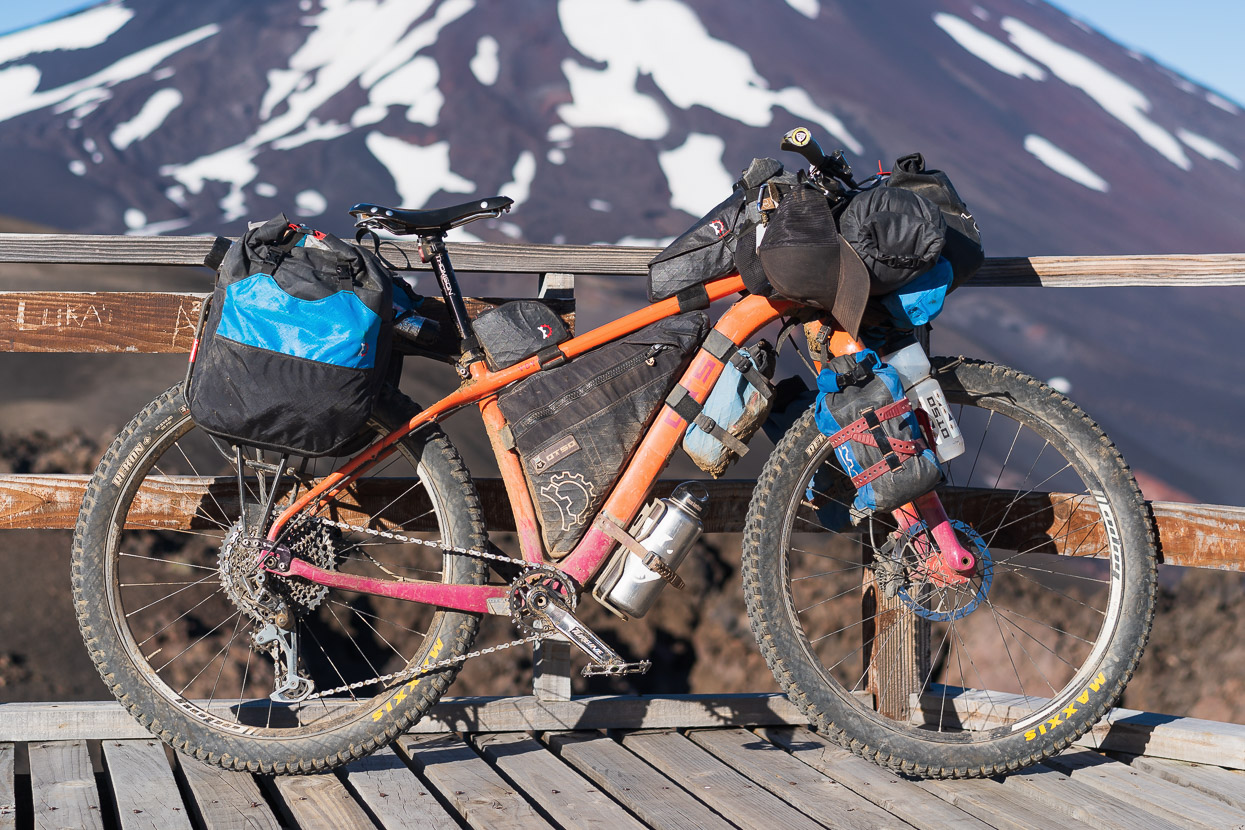
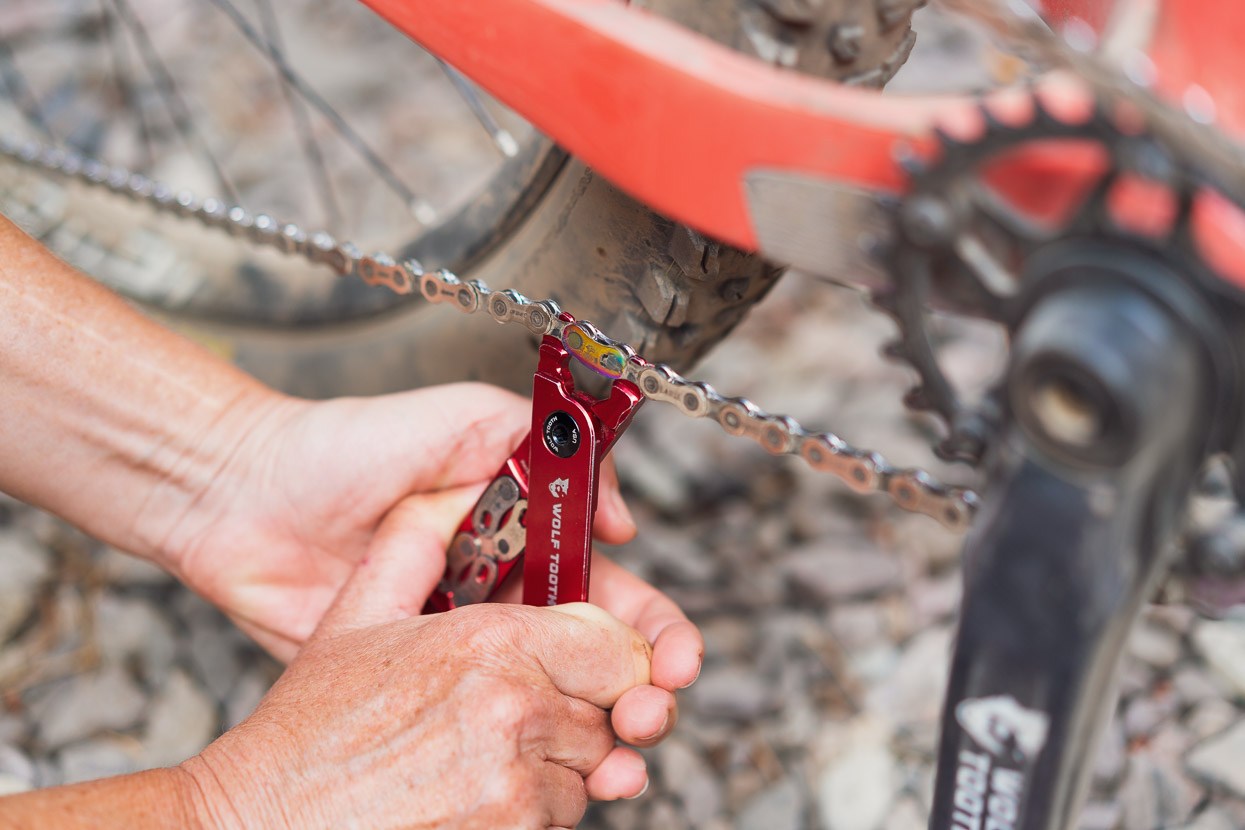
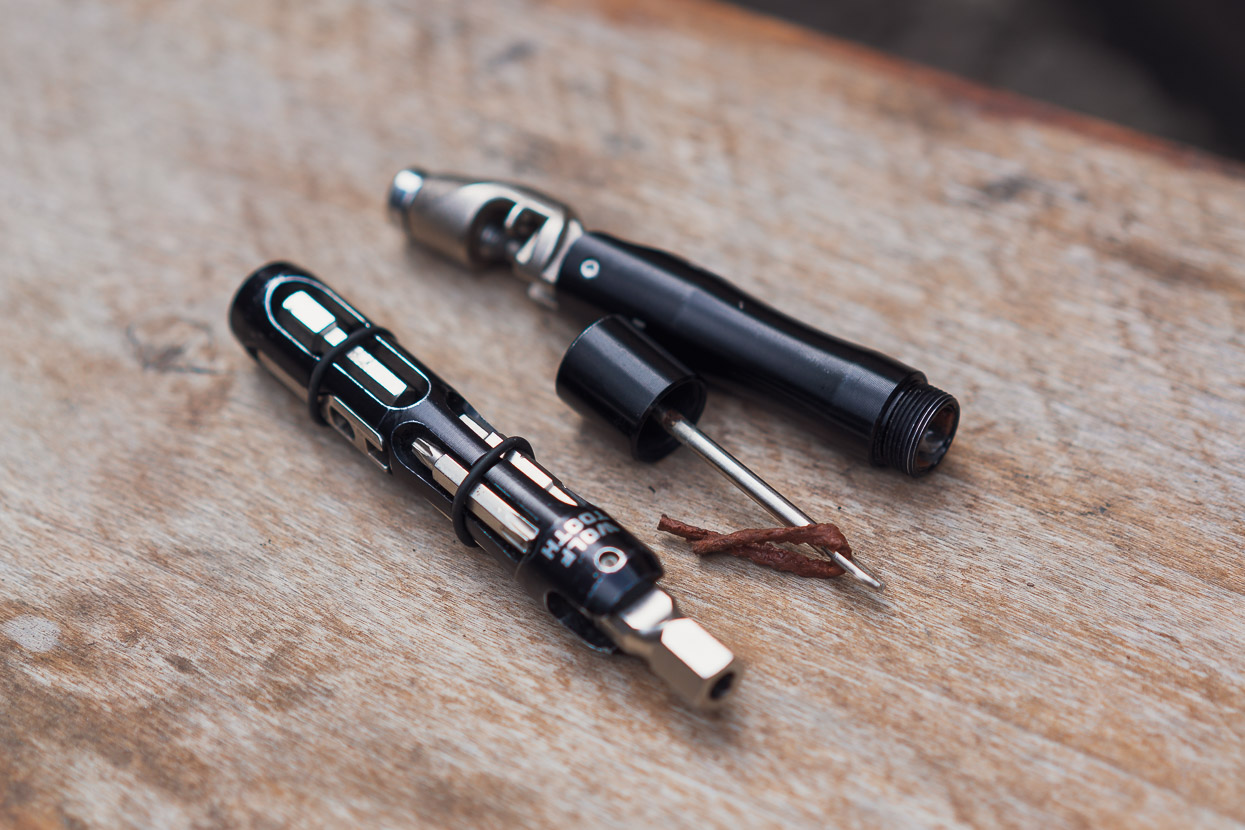
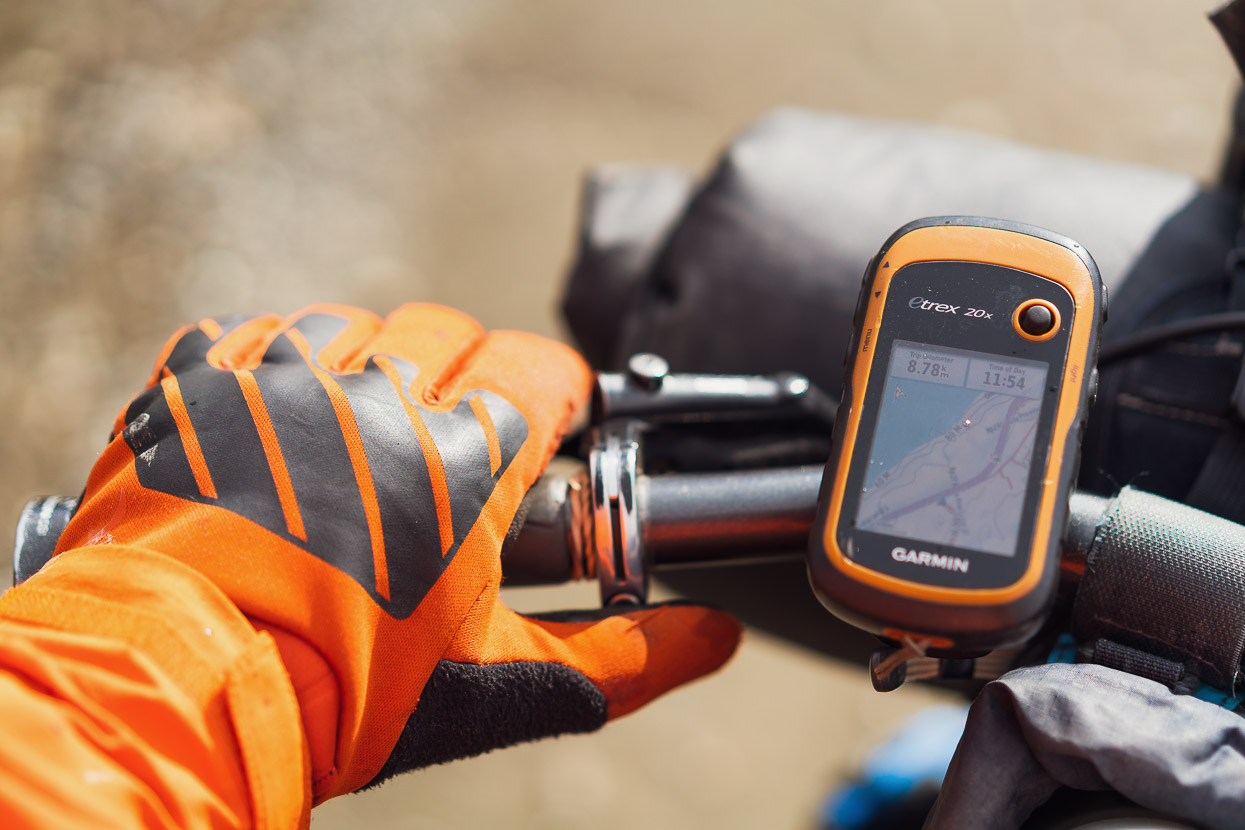
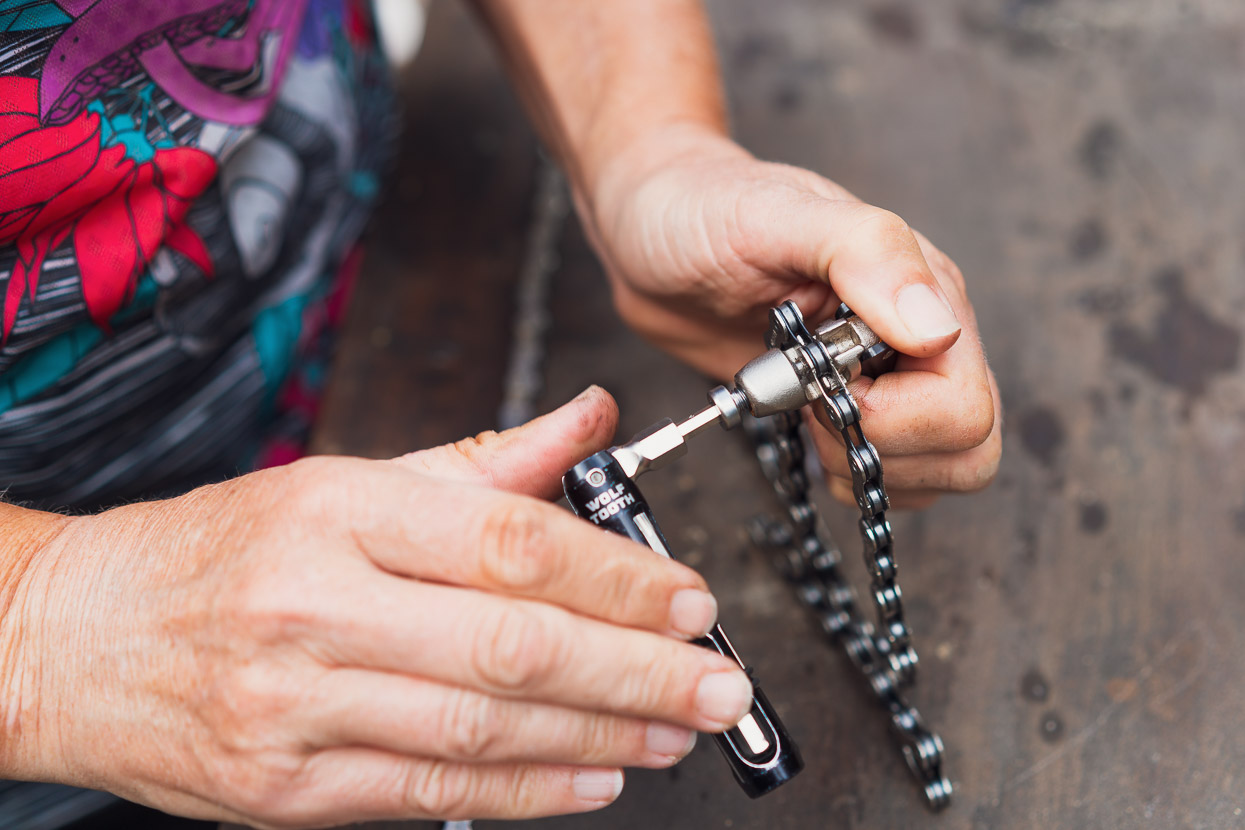
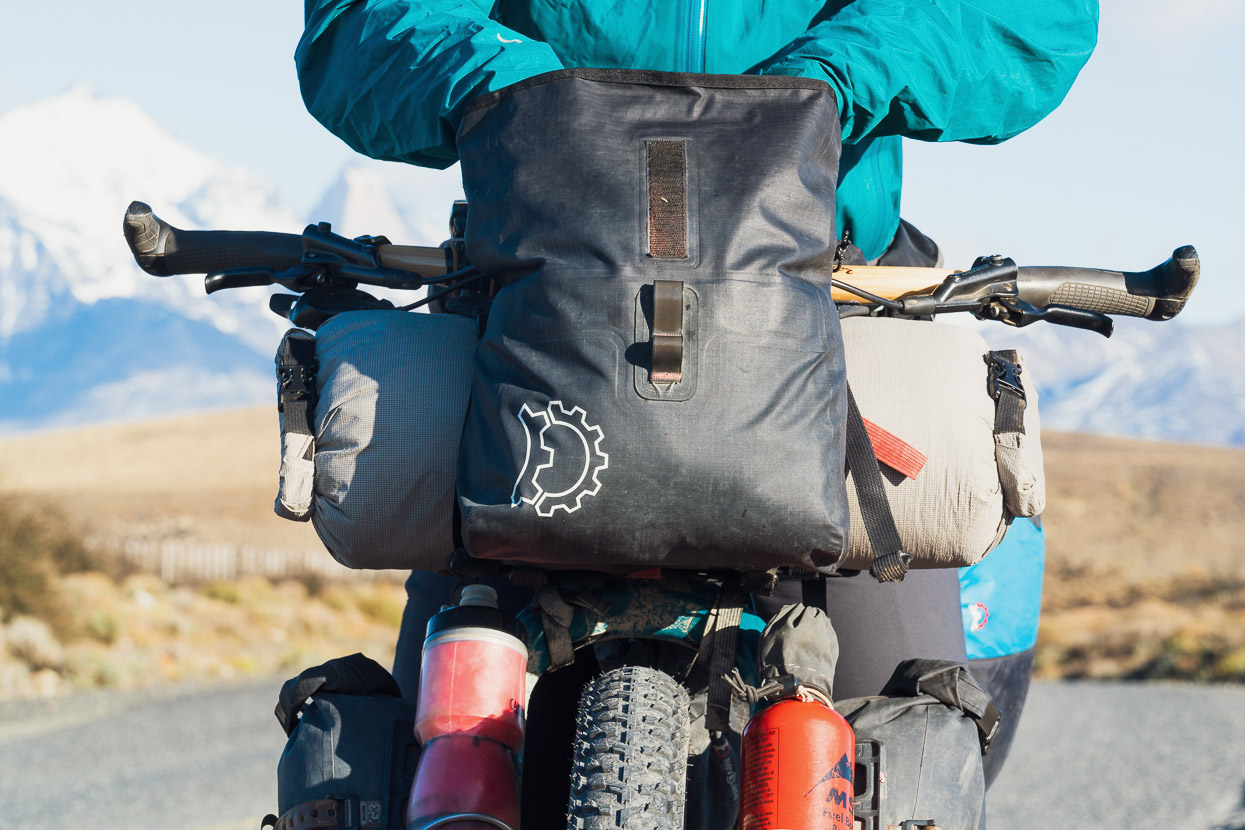
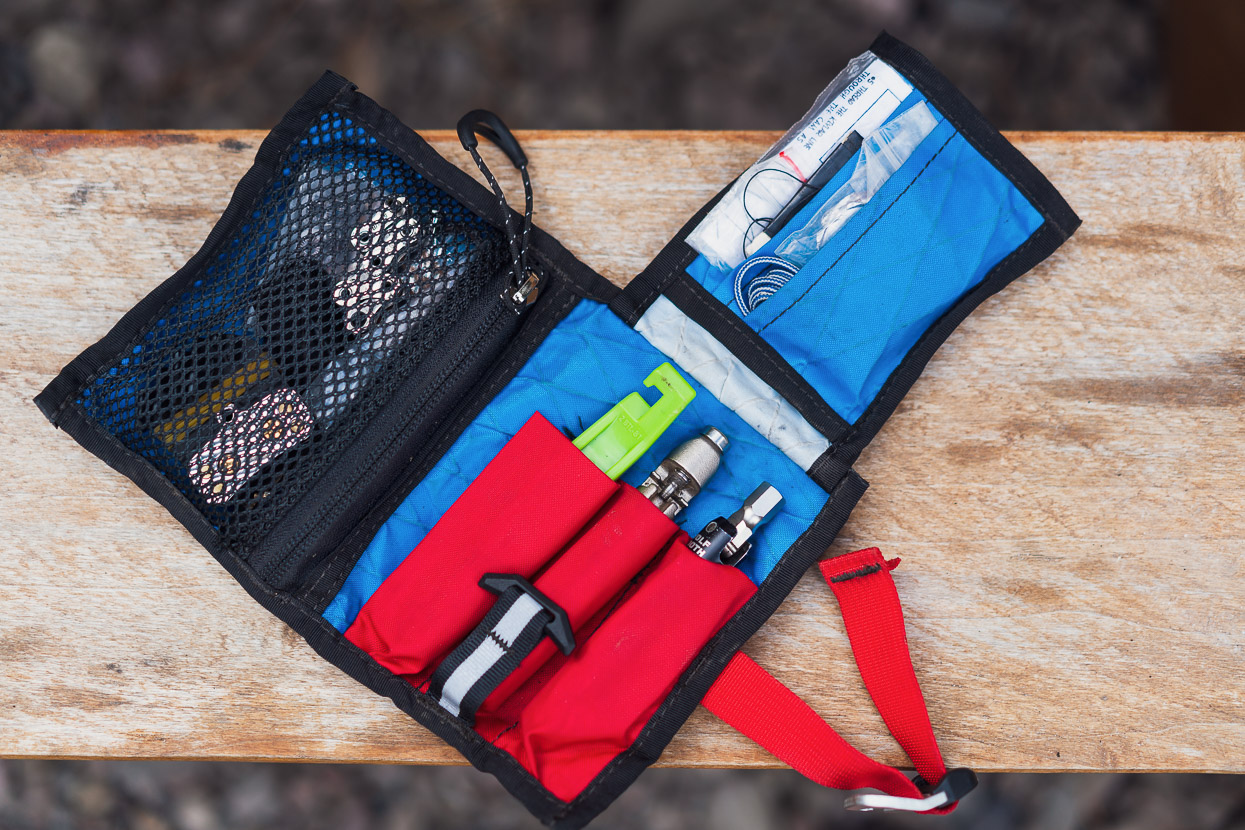
bikepacking e-book
Bikes, gear, planning, navigation and living on the road
Bikepacking & Off-road Cycle Touring Guide
Our e-book provides a tool kit of skills and knowledge for cyclists who want to get off the beaten track and undertake extended bikepacking tours, with a focus on travelling light. While the information is designed for cyclists planning long distance off-road tours, it contains many tips that are applicable in any bikepacking scenario, long or short. US$19.99
bikepacking e-book
Bikes, gear, planning, navigation and living on the road
Our e-book provides a tool kit of skills and knowledge for cyclists who want to get off the beaten track and undertake extended bikepacking tours, with a focus on travelling light. While the information is designed for cyclists planning long distance off-road oriented tours, it contains many tips that are applicable in any bikepacking scenario, long or short. US$19.99.
If you find our content informative or inspirational, you’re welcome to show us some love with a donation or by purchasing our bikepacking guide.

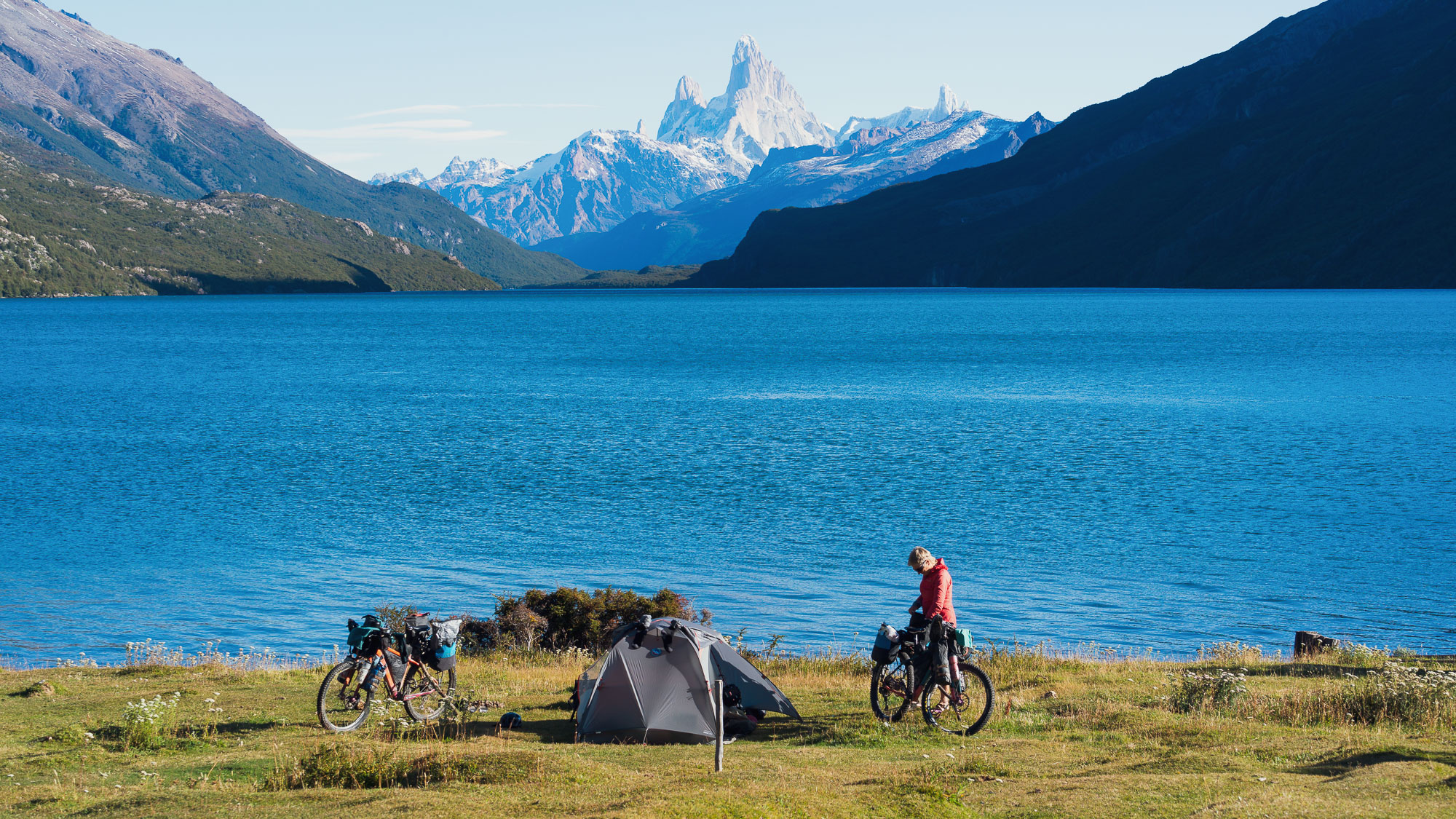
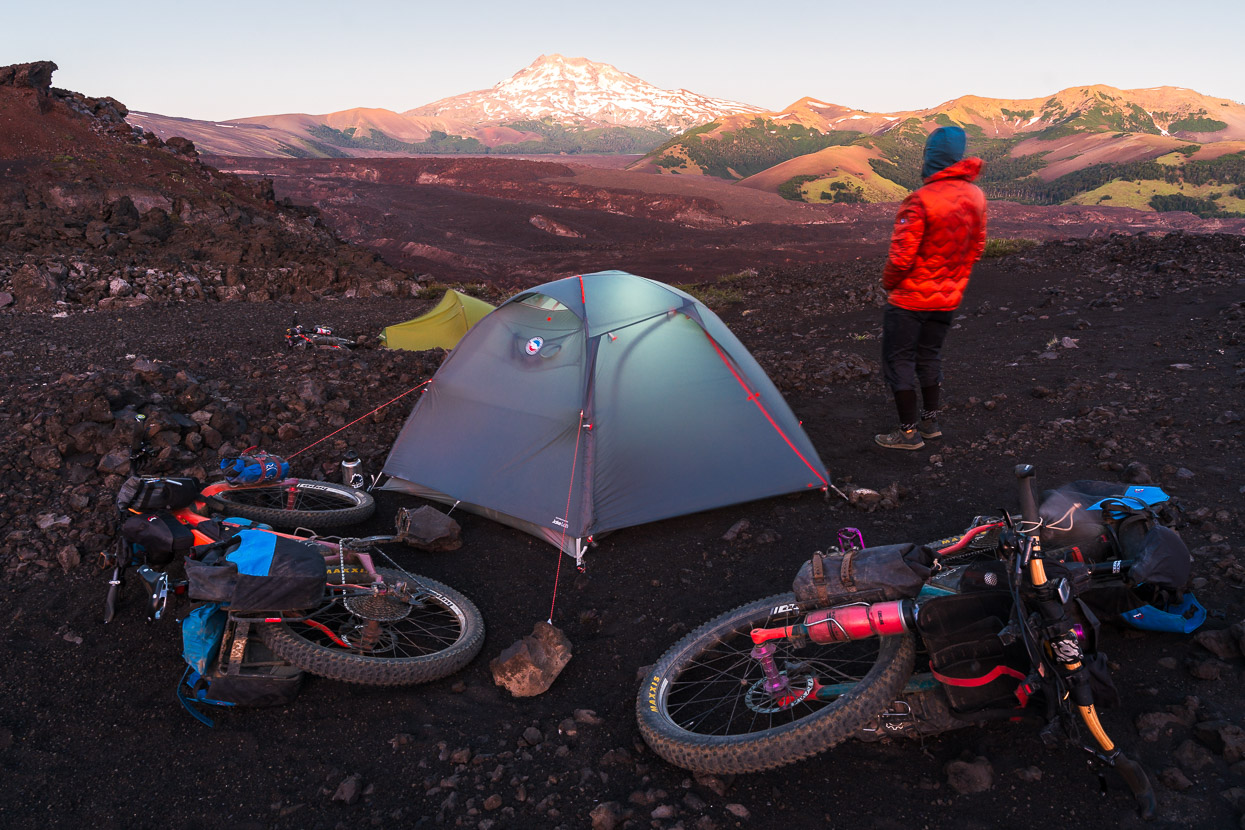
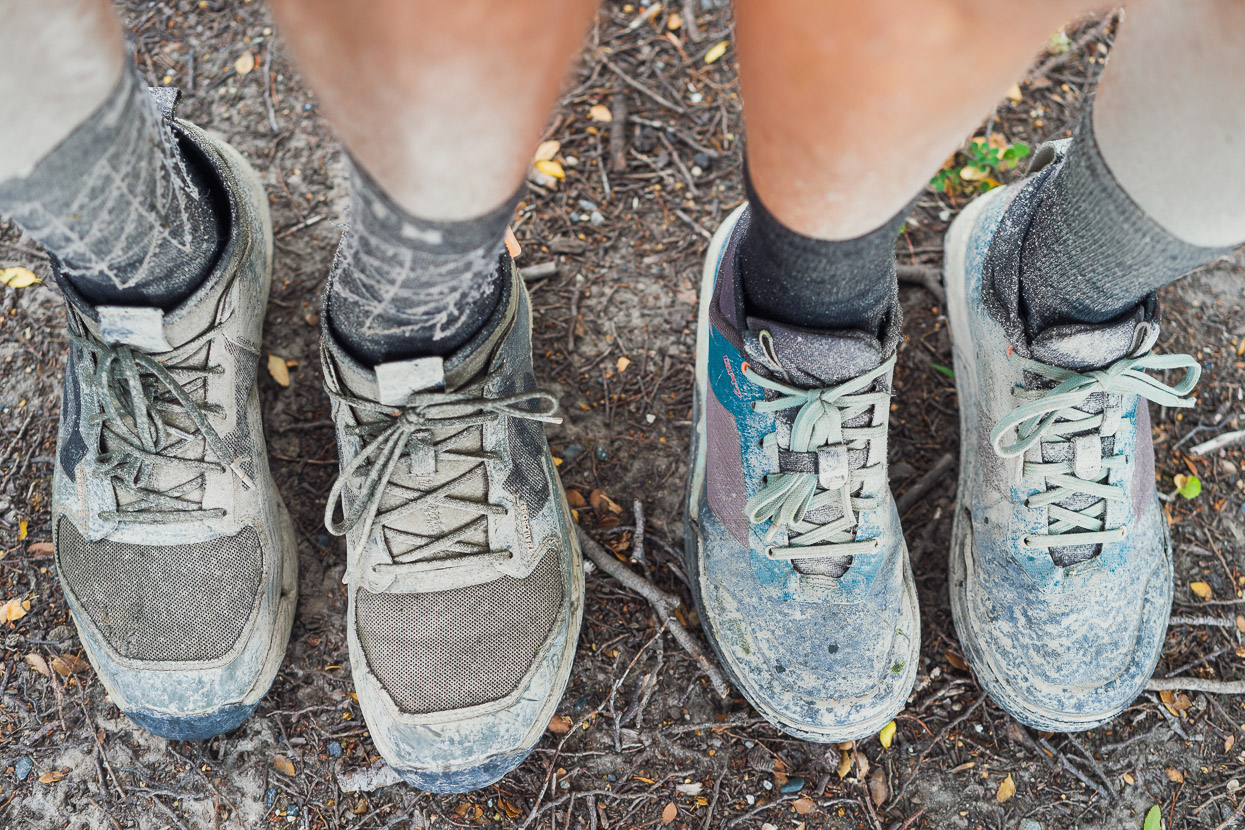
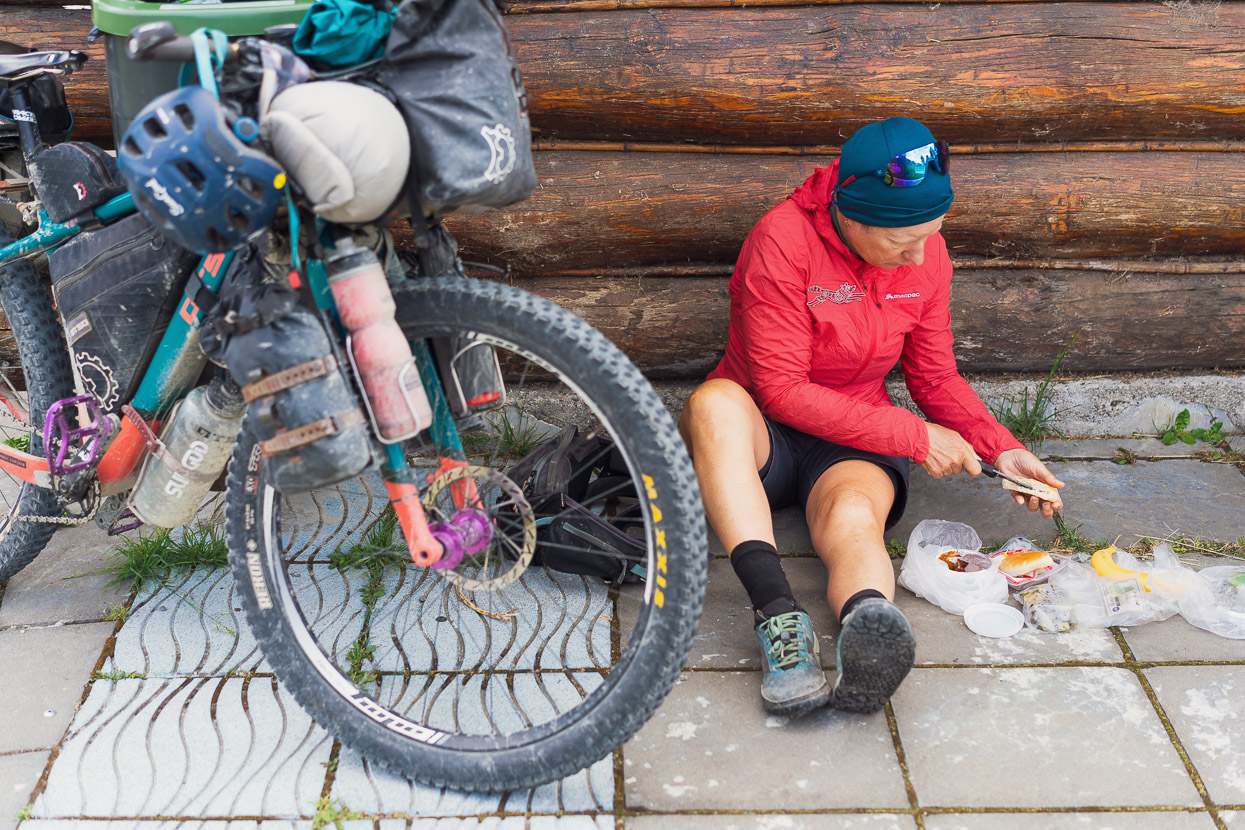
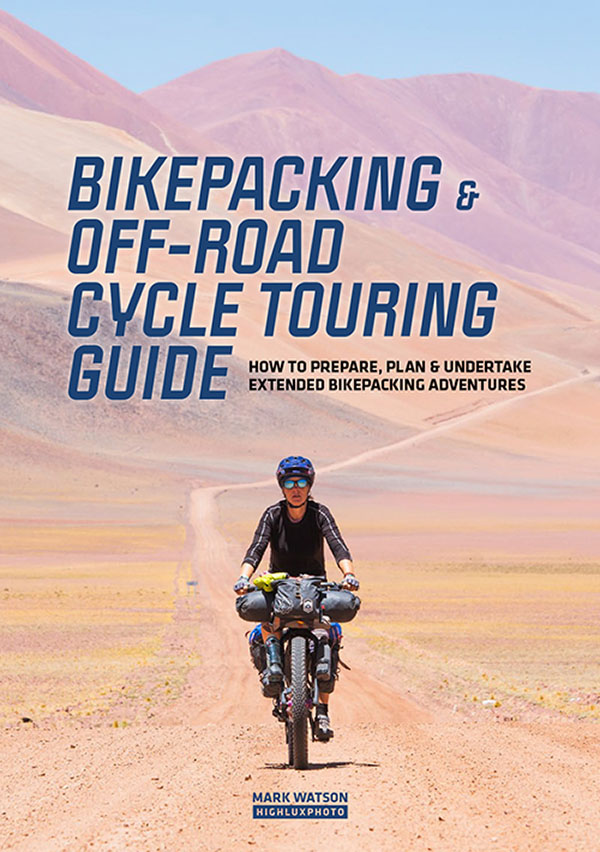
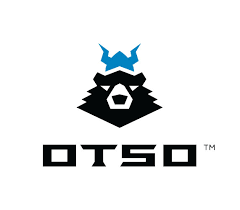

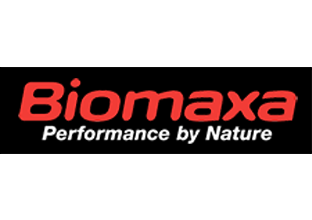

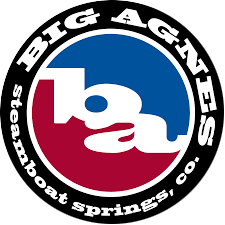









Join the discussion One Comment